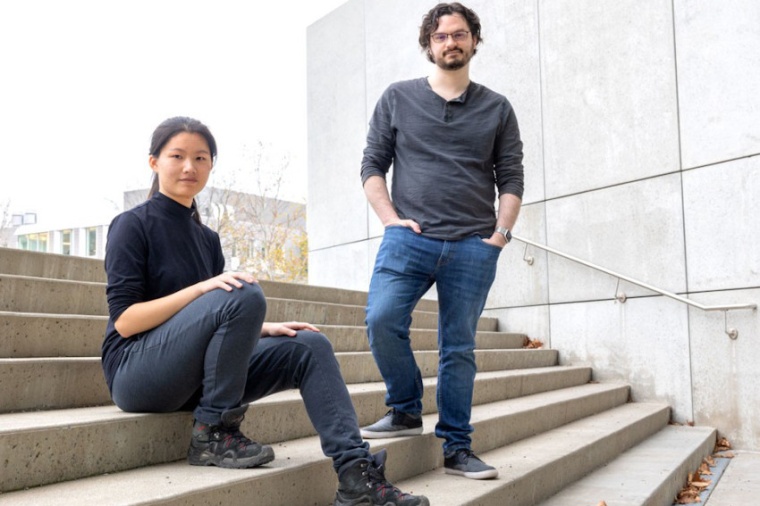App creates time-lapse videos with a smartphone
The freely available app has three capture modes that cover a range of scenarios.
An app developed by Cornell researchers uses augmented reality to help users repeatedly capture images from the same location with a phone or tablet to make time-lapse videos – without leaving a camera on site. Time-lapse photography, which involves combining photos taken over long periods of time, provides a powerful way to visualize phenomena such as changing seasons or the movement of the sun. Traditionally, photographers would leave a camera on a tripod for the duration of the event, but researchers working with Abe Davis in the Cornell Ann S. Bowers College of Computing and Information Science have developed a more convenient method. Their iOS app, ReCapture, is now freely available in the Apple app store.


The app has three capture modes that cover a range of scenarios. One works best for landscapes, one helps capture close-up scenes and a third collects a range of images that can be used to reconstruct the scene in 3D offline. Each capture mode uses different information about the scene. The simplest mode uses an overlay of previous shots to help the user line up new photos. For close-up scenes, which tend to be more difficult to capture, the application tries to figure out where the camera is in 3D space and uses arrows to tell the user how to move and tilt their phone toward the correct location.
Abe Davis had been envisioning a project that would help field researchers repeatedly find and re-photograph precise locations from their field sites to track any changes. Together with Ruyu Yan he came up with the idea of “geocaching with pictures,” which ultimately evolved into ReCapture. “Geocaching may be something that people are doing for fun, but if you’re a scientist and you're doing field work, then there’s a similar kind of problem at play,” Davis said.
Yan said the hardest part was developing the app interface to guide users through the process, because “what works intuitively for me may not work intuitively for others.” She sought feedback from 20 beta testers and also worked with the XR Collaboratory at Cornell Tech, which advises researchers on augmented reality, virtual reality and mixed reality applications. Additionally, she had to figure out how to manage the mountains of data associated with the photos. “The app used to crash a lot,” she said. This was a problem because if the app was too slow or constantly crashing, people wouldn’t collect enough footage, leading to jerky, poor quality videos.
In future versions of the app, Davis thinks they may be able to smooth out gaps and abrupt transitions in the footage using recent machine learning techniques, which would yield higher quality videos. Besides making gifs and videos, the app may also have valuable scientific applications, as Davis had envisioned. The team has shared the app with field researchers in other departments at Cornell, and colleagues in the School of Integrative Plant Science in the College of Agriculture and Life Sciences have already begun using it to collect data. (Source: Cornell U.)
Link: Project ReCapture, Dept. of Computer Science, Cornell University, Ithaka, USA
most read

Change in management at Stemmer Imaging: Arne Dehn steps down
New interim CEO Paul Scholten takes over management

Qioptiq Photonics becomes Excelitas Germany
The renaming is part of the global consolidation of the Excelitas Group.

Lenze Group reorganizes its Executive Board and focuses on transformation
As part of the reorganization, Dr.-Ing. Claus Bischoff (CTO) left the company in April and Dr. Achim Degner (CFO) in July.

New member of the board of VDMA Robotics + Automation
Dr. Michael Jürgens, CEO of Kuka Robotics, has been appointed to the board of the VDMA trade association.

Softbank acquires ABB's robotics business
The Softbank Group has reached a definitive agreement to acquire ABB's robotics business.






